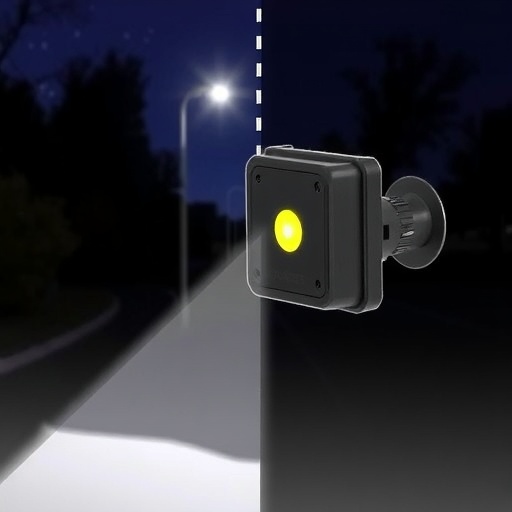A pioneering research effort spearheaded by a collaboration between Dr. Wooseok Song’s team at the Korea Research Institute of Chemical Technology (KRICT) and Professor Dae Ho Yoon at Sungkyunkwan University has led to the breakthrough development of an advanced photodetector material. This state-of-the-art sensor material is engineered to detect an extensive range of light wavelengths, marking a significant leap in sensor technology. Utilizing a novel ternary topological crystalline insulator composed of tin selenide (SnSe) with tellurium (Te) substitution, this material has demonstrated unprecedented capabilities in terms of wavelength detection and environmental stability.
Photodetectors serve a critical role in various applications, including smart devices, security systems, environmental monitoring, and healthcare technologies. Traditionally, these detectors are categorized based on the specific wavelength ranges they can perceive. Consequently, many applications, including those in autonomous vehicles and military drones, necessitate an array of sensors to function effectively in different wavelengths. A conventional system might deploy separate sensors to handle visible, near-infrared (NIR), mid-infrared (MWIR), and long-wave infrared (LWIR) tasks. However, with the advent of this cutting-edge broadband photodetector, the need for multiple discrete sensors is virtually eliminated, as it can seamlessly integrate these functions into a single device.
The newly developed photodetector showcases its ability to detect an expansive spectrum, ranging from visible light all the way through to LWIR. This remarkable capability does not come at the expense of stability, as the sensor is designed to withstand extreme environmental conditions, including high temperatures and elevated humidity levels. By consolidating multiple sensor functionalities, manufacturers can simplify product design, reduce production costs, and enhance the efficiency of devices such as autonomous vehicles and military reconnaissance drones. Such innovations could lead to a single multifunctional sensor that replaces the need for discrete systems dedicated to specific functions.
The innovative approach taken by the research team involves leveraging the properties of topological crystalline insulators. The specific material, SnSe₀.₉Te₀.₁, benefits from a narrow band gap that allows it to absorb long-wavelength light—essentially enabling it to detect photons with lower energy that traditional two-dimensional semiconductors could not perceive due to their wider band gaps. This unique property enables motion of electrons on surface states, which translates to broadband detection capabilities. The result is a sensor that can even detect seemingly minor thermal emissions from objects like human fingers, which is pivotal for ensuring accurate performance in various applications.
Comparatively, this innovative material boasts an approximately eight-fold improvement in detection range (0.5–9.6 μm) when stacked against conventional two-dimensional semiconductor alternatives that allow for detection only within the 0.4–1.2 μm range. Moreover, the material is not just more responsive; it is also significantly lighter, thinner, and more adaptable to fluctuating environmental conditions. Such essential attributes make it a prime candidate for deployment across numerous practical applications.
An equally remarkable aspect of this development lies in the cost-effective fabrication processes utilized by the research team. Traditional methods for creating topological crystalline insulators necessitate expensive equipment capable of operating under ultra-high vacuum conditions, such as molecular beam epitaxy (MBE). However, by identifying an innovative approach that retains essential topological properties while minimizing sensitivity, the research team was able to create SnSe₀.₉Te₀.₁ via thermal decomposition synthesis. This method allows for uniform production scaling on a standard 6-inch wafer, integrating seamlessly with existing semiconductor manufacturing protocols.
The implications of their work are substantial for the future of sensor technology. With continued advancements, the team is extending their innovative work to 8-inch wafers and exploring pathways to incorporate sensor arrays and circuits, which will culminate in the development of comprehensive sensor modules, further amplifying the technological capabilities of sensor devices in markets ranging from automotive to home security.
The societal impact of this breakthrough cannot be overstated. Dr. Wooseok Song expressed the versatility of the sensor technology, noting its applicability across a wide spectrum of fields, including autonomous vehicles, military reconnaissance, and consumer electronics such as smartwatches and IoT security systems. KRICT President Young-Kuk Lee also underscored the significance of this research, elucidating how it heralds a shift away from reliance on costly imported sensor technologies, paving the way for high-performance, domestically produced solutions.
This pioneering research was published in the esteemed journal ACS Nano, underscoring the innovation and potential this photodetector material possesses. The achievement represents not only a remarkable scientific advancement but also a pivotal turning point in sensor technology, as it envisions future applications that seamlessly blend multiple functionalities into compact, cost-effective systems.
In conclusion, the advancements in broadband photodetector technology led by the research teams from KRICT and Sungkyunkwan University stand to redefine the capabilities of sensor devices across multiple sectors. With the potential for widespread applications and significant manufacturing efficiencies, these technologies will ultimately contribute to a more connected and intelligent future.
Subject of Research: Development of Broadband and High-Stability Photo detector Material
Article Title: Ultrabroadband Photoconductive Topological Material with Exceptional Multienvironmental Stability
News Publication Date: 14-Jul-2025
Web References: Not available
References: Not available
Image Credits: Credit: Korea Research Institute of Chemical Technology (KRICT)
Keywords
broadband photodetector, topological crystalline insulator, SnSeTe, sensor technology, environmental stability, autonomous vehicles, military drones, semiconductor fabrication, wavelength detection, KRICT, ACS Nano, photodetection technologies.
Tags: advanced broadband photodetector technologyautonomous vehicles sensor integrationday-night recognition photodetectordistance measurement sensor developmentenvironmental stability in sensorshealthcare technologies using photodetectorslight wavelength detection breakthroughsmilitary drones and sensor technologymultifunctional photodetector applicationsphotodetector material innovationssmart devices and sensor technologyternary topological crystalline insulator





